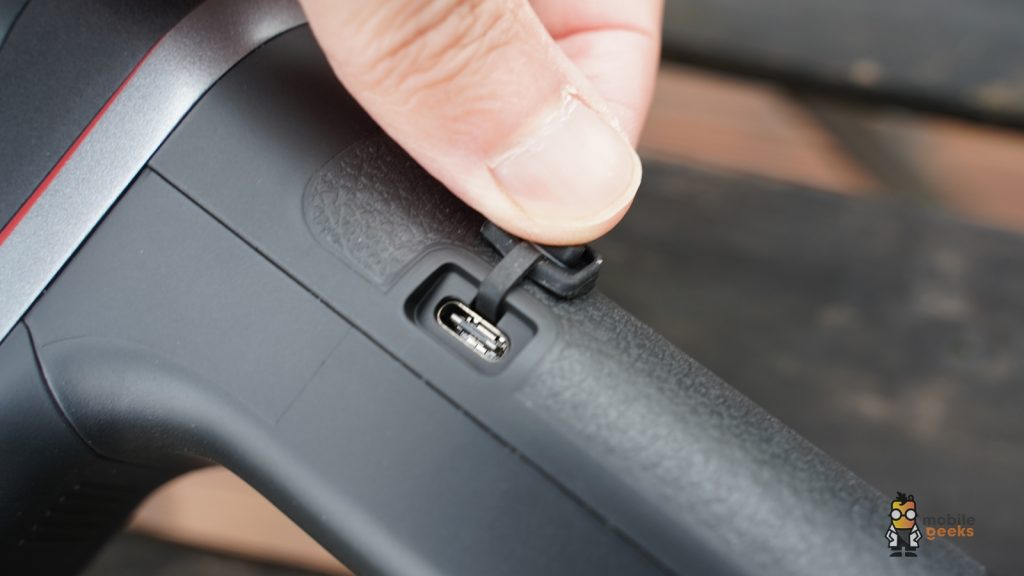Zhiyun Weebill 2 in the test
Contents
Zhiyun Weebill 2 – scope of delivery
I personally have the Pro version of the Zhiyun Weebill 2 with a little more accessories than the basic version. Accordingly, I will divide up here so that it is clear what is inside:
- Zhiyun WEEBILL-2 gimbal
- quick start Guide
- Mini tripod
- Carrier plate
- Quick release plate
- Lens support
- Canon Camera Control Cable: LN-MBUC-A02 & LN-NBUC-A01
- Panasonic Camera Control Cable
- Sony Camera Control Cable: LN-UCUS-A03
- three 1/4 ″ screws (20 mm)
- EPP storage box
With the combo variant, the following is added, but the box is omitted:
- Sling grip handle
- TransMount Weebill carrying case
The Pro version that I have here adds the following to all of this:
- Sling grip handle
- TransMount Weebill carrying case
- TransMount video transmitter
- TransMount FollowFocus
And if you want the Pro Plus version, you get the all-in-one package:
- MasterEye Visual Controller VC100
The Zhiyun Weebill 2, like the entire Weebill range, is significantly more compact than the Crane models and weighs only 1.47 kg. The Zhiyun Weebill S is even more compact and lighter with a similar payload. It can carry most cameras or additional equipment between 300g and 4kg and doesn’t compromise on its compactness. The gimbal is mainly made of metal and has some plastic or rubberized areas on the underside. This time they managed to make it extremely robust, to offer a good grip, so that the whole thing can be carried safely and even donated a fold-out display.
In addition to everything listed above, you will also find a very robust mini tripod inside. This is extremely practical, as it gives you the opportunity to set up the gimbal somewhere and can also be used as a grip extension. In the Pro version, however, there is also a multi-function handle that not only extends the gimbal and significantly optimizes handling, but also has interfaces for extensions itself. Because it has a quick-release plate mechanism, you don’t have to constantly screw it on and off, just slide it into one another and lock it.
Zhiyun Weebill 2 – Super easy setup
The setup is very easy compared to other gimbals. The Zhiyun Weebill 2 has locks on all three axles, which can either keep it in a safe position for transport without damaging the engine, or simplify assembly. So you take it out of your pocket, release the lock, bring the axles into the assembly position and switch the locks on again. Now you can attach one of the two quick-release plates to the camera and then slide it into the gimbal slider and lock it. Then unlock the first axis, balance it and do the same with axis two and three. A few years ago, this process took forever and required a lot of fine-tuning. Here you can do it in two minutes without any practice. Balancing is really easy as the system is very well thought out. I practically never had to readjust. However, if you proceed very roughly here, that is not a problem, as the motor can correct minor shifts in equilibrium without any problems. The battery only lasts longer if you balance correctly. In operation, this is also the only gimbal so far where I can extend my zoom lens without correcting anything, as the motor is really powerful.
What is special about the quick-release plates is that you are not limited to a certain type, but can also use those with a Manfrotto and Arca-Swiss connection. So you don’t have to change anything if you want to switch from tripod to gimbal and back. In the package you will also find a support for the lens, which prevents the heavy lenses from springing. Here Zhiyun listened to me and many other users. Previously, this support was made of metal with a thin rubber band that was not enough and caused the lenses to get scratched. Since there weren’t any Amazon reviews, etc. back then, nobody could warn me about it. In the meantime they have switched to plastic, which does not have any disadvantages and solves the problem with scratches. So kudos to Zhiyun, even if it took two generations, according to the Lab and S model.
I myself (still) use a Sony A7 III with Tamron 28-75 mm f / 2.8 and the Zhiyun Weebill 2 has no problems with carrying it, even if I zoom in completely, connect a microphone, etc. it works without any problems. The A7 IV and my sigma lens, which is almost twice as heavy, will arrive soon, and there will certainly be no problems here either. This was not yet possible with predecessors. The weight also affects the battery life. The heavier the equipment and the worse it is balanced, the harder the engine has to work. Wrong balancing is forgiven by the motor, but not the battery. Zhiyun promises up to 9 hours. This is a little less than the Lab with 10 hours and S with 14 hours, but you have to bear in mind that in most cases you will not film 9 hours at a time. Accordingly, it should withstand several days with sessions lasting several hours. In addition, thanks to fast charging, the gimbal is fully charged in around an hour. The nice thing here is that a modern connection with USB-C is used here.
Zhiyun Weebill 2 – Various stabilization modes
The camera is stabilized immediately when it is switched on. With the various switches or the touch display you have access to various modes and do not necessarily need the app, as a lot is also shown on the integrated display. This also allows you to change settings for the motor etc. directly on the device, which I was not able to do with many older models. Or you can now do almost everything without an app. The different modes that are supported here are:
- Pan Follow mode: Pan will work, but tilt and roll is blocked
- Lock mode: All axes are blocked so that the camera always looks in the same direction.
- Follow mode: The stabilizer follows pan and tilt movements.
- Go mode: the gimbal follows all movements very directly and without delay. Very important, especially for fast movements.
- POV mode: As follow mode but with three instead of two axes (e.g. for Dutch-Angle-Shots
- Portrait mode, for vertical shots (camera must be relocated)

One of the best functions of the Zhiyun Weebill 2, like the Zhiyun Crane Plus or the Zhiyun Weebill Lab, is the POV or FPV mode. This allows you to record oblique perspectives by tilting the gimbal to the side or by using the joystick (or the app), which gives you more freedom with Dutch-Angle recordings and allows more creativity. You can reach an angle of up to 45 degrees on each side.

Of course, you can also hold the gimbal upside down. I like to use this for shots close to the ground, for example when I want to start with my feet while walking and slowly climb up to finally climb over my heads. This can of course also be used well in scenes where you have to run along yourself, which ensures a stable picture.
Overall, you can say that the stabilization is extremely reliable and forgives even the grossest mistakes, even if the camera is a little heavier, or you can change the balance significantly by zooming. Depending on the lens, you may not be able to zoom out fully, but this is at least the first gimbal that is not intended for ultra-heavy cameras, where I reach the full 75 mm instead of a maximum of 50. But my lens is pretty light in general. Nevertheless, regardless of whether you are a professional or a hobby videographer: the result is great. If you then hold onto it properly and adjust the gait or the running, you feel like you are filming the next Hollywood blockbuster.
Zhiyun Weebill 2 – App, object tracking and wireless image transfer
Thanks to the ZY Play app, you have access to the calibration options and some advanced functions that further expand the functionality of the camera. But these are all things that you can do with the integrated display.
Object tracking is brilliant here. This is because the app no longer has to estimate the position with the smartphone’s camera, but can instead access the camera’s image wirelessly. You connect the camera and gimbal with the video transmission cable, or even better: the TransMount video transmitter, connect the smartphone and you have a live image. You get the best and highest quality result with the transmitter. If you even have the Pro Plus version with the display, you practically have a picture over a longer distance as if by cable.

If you then select the object tracking, you can draw a square around the person or the object that is to be tracked and everything runs as if by itself. If you then connect the gimbal to a tripod, you can easily walk around and the camera automatically follows and focuses. Even with very fast movements, it is reliable and makes you a one-man camera team. You can also use this feature in a creative way, for example by putting the Zhiyun Weebill 2 on a slider and wanting to simulate tracking shots around an object, such as a smartphone test video. As far as I know, the video transmission with transmitter works on up to three devices, although I was unable to test it.
By connecting to the smartphone (or the separate monitor), you can of course do more, such as manually changing the aperture, iso, focus, etc. So you don’t have to fiddle around with the camera and impair the stabilization, but can do it comfortably with the smartphone. You can do everything with the integrated display and the many control mechanisms, wheels, etc., but sometimes there are situations where you want to do it from afar.
The operation is of course not tied to the smartphone at all, as you can really adjust and set everything yourself with the buttons and controls on the gimbal. It doesn’t matter whether you want to switch between various modes, adjust the focus and more. The gimbal gives you full control here. The joystick in particular has been solved excellently this time.
Zhiyun Weebill 2 – More accessories and price
In general, the Zhiyun Weebill 2 and its functionality can be greatly expanded. Depending on which package you ordered, you have other accessories in it. But you could also simply reorder individual parts. The prices are currently as follows:
- Zhiyun Weebill 2 – € 499
- Zhiyun Weebill 2 Combo – € 579
- Zhiyun Weebill 2 Pro – € 799
- Zhiyun Weebill 2 Pro Plus – € 1,129
I’m really fascinated by what you now get for the price, where a few years ago you had to spend 600 to 1000 euros for a much too large, heavy, and less functional part. Here the gimbal almost slips to prices where even as a hobby videographer you need to think much less about the purchase. Only the accessories drive the price up. Here I think that the basic version or the combo version is suitable for most of them. just with the bag and the extra handle.
You should only use the Pro version and above if you also want to control the focus via the gimbal, smartphone or monitor, if you want good image transmission and if you want to control the gimbal from further away.




![The best deals on Amazon Prime Day 2023 [Anzeige] The best deals on Amazon Prime Day 2023 [Anzeige]](https://www.basicthinking.de/blog/wp-content/uploads/2023/07/amazon-prime-day-2023-angebote-von-yeedi.png)

